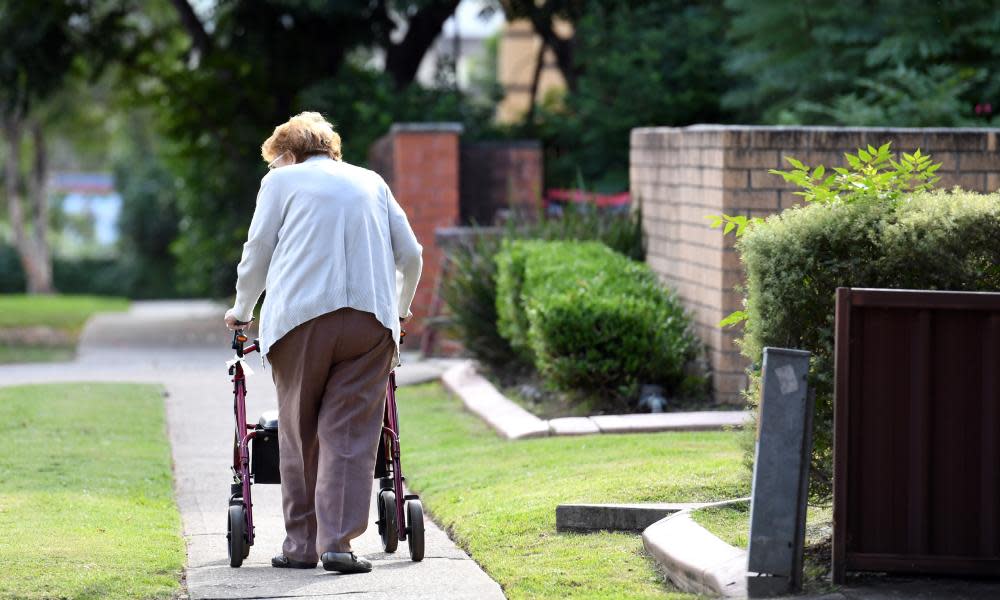Aged care, women and infrastructure: what to expect from federal budget 2021

Tuesday’s pandemic budget, which the treasurer, Josh Frydenberg, insists is not a “spendathon”, will pump billions of dollars into the economy as the government attempts to cement Australia’s economic recovery after last year’s downturn.
With Australia’s borders closed for the foreseeable future and the government aiming for an unemployment rate below 5%, the budget will have a focus on stimulating the domestic economy and job creation.
The 2021-22 budget has also been put together with an eye to the next election, with a multi-billion-dollar infrastructure package targeting key battleground electorates. The government is also hoping a focus on women will help lift its standing among female voters.
Related: Federal Budget 2021: Coalition to inject more than $4bn into infrastructure projects
So before the big day reveals all, what do we know so far?
Aged care
Funding for the aged care sector will be the centrepiece of the 2021-22 budget, with a package worth more than $17bn to be unveiled.
The government is describing the package as a “once-in-a-generation investment” into the sector that will respond to the issues raised in the royal commission into aged care, which delivered its damning final report last year. The royal commission’s recommendations were estimated to cost an extra $10bn a year.
The package will direct funding towards improving safety and quality standards, ensuring the sustainability of private providers and increasing the availability of home care packages.
A key part of the package will also be a major workforce initiative aimed at addressing the chronic skills and staffing shortages experienced in the sector.
Childcare
The government has announced a $1.7bn package for increased childcare subsidies, which focus on low and middle-income families with more than one child.
The main cost of the changes – which don’t come into effect until July 2022 – is to increase the subsidy to 95% of the daily fee, up from 85% for second and subsequent children.
A cap of $10,560 will also be scrapped in a move that will benefit higher-income earners.
Infrastructure
More than $4bn will be spent on infrastructure, including $2bn in funding for an intermodal terminal in Melbourne and more than $2bn to upgrade the Great Western Highway between Katoomba and Lithgow in Sydney’s Blue Mountains.
The infrastructure cash splash will see money flowing to road and rail projects in the key battleground states of Queensland, WA and Tasmania, where the government needs to hold on to a swag of marginal electorates to stay in power.
Separately, the government has also announced the Building Better Regions Fund will be given another $250m for its sixth round, despite the program being criticised for pork barrelling.
Women
Tuesday’s budget will also aim to restore the government’s standing among female voters, which has been buffeted by a series of misconduct scandals first triggered by Coalition staffer Brittany Higgins alleging she was raped in Parliament House.
The government has already announced a $354m women’s health package, which includes $100m for cervical and breast cancer screening programs, and more support for mental health and wellbeing of new and expectant parents.
The budget will include a statement on women’s safety and health, with funding for domestic violence prevention to more than double to at least $680m.
While nothing has been announced as yet, a major skills package focusing on female-dominated industries such as childcare and aged care is also anticipated.
Housing
A new family home guarantee is also targeting women and single parents with a program to support up to 10,000 single parents buy a home with a deposit of only 2%.
Of the 125,000 eligible single parents, about 85% are women.
The first-home guarantee, which allows first-home buyers to build a new home, or purchase a newly built home with a deposit of as little as 5%, will also be expanded, with another 10,000 places made available.
And the government will also increase the amount of money that someone can withdraw from their superannuation under the first home super saver scheme, increasing the amount from $30,000 to $50,000.
Climate and energy
The government has already allocated $540m for new clean hydrogen and carbon capture and storage projects, and another $560m for international technology partnerships.
It will also allocate $600m for a new national recovery and resilience agency to fund resilience projects such as proofing houses against bushfires and cyclones, building levees for flood control, and improving the resilience of telecommunications and essential supplies.
About $60m will be spent on “gas-fired recovery” measures, and there is speculation that it may also provide funding for a new power plant in the Hunter Valley despite experts questioning the need for it.
Business
A $1.2bn package for business and digital government services has also been announced under the government’s digital economy strategy.
This includes more than $100m on skills, $124m on artificial intelligence, $200m to overhaul myGov and $302m on the My Health Record system.
A $255m tax break for small brewers and distillers that lifts the excise refund cap has also been announced.
The government has also announced a $371m biosecurity package to help protect the agricultural sector.
Tax cuts
The government is expected to extend the low and middle-income tax offset – known as “the lamington” for another year beyond its 30 June end date.
The offset is worth between $255 and $1080 for about 10 million workers earning between $37,000 and $90,000.
Controversial stage-three income tax cuts are also expected to be confirmed in Tuesday’s budget, with the $17bn annual cost of the measure to be reflected on the balance sheet from 2024.

 Yahoo Movies
Yahoo Movies 
